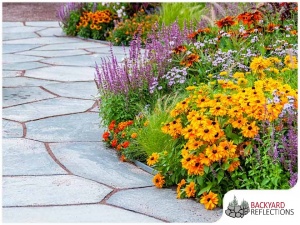Adding pavers is a great way to improve the appearance of your outdoor living spaces. Generally, they fall into two categories: natural stone (e.g. brick and clay) and composite (e.g. concrete). Given the overwhelmingly abundant options between them, you must do your research and preparations so you can settle on what you think is the best fit for your outdoors. Here’s what you need to consider:

Local Climate
Your choice of paver material should not just withstand regular foot traffic but also the weather patterns in your area. Keep in mind, however, that not every paver type is appropriate for every climate. For instance, brick’s porosity can expedite its wear and tear faster than concrete in regions with a lot of snow or rain. Limestone tends to fade when exposed under the intense heat of the sun.
Paver Shape
The dimensions of your landscape space help determine the shape of the pavers. Inspect your patio or yard first—if you see angular shapes, standard brick pavers may just work. If you have a larger patio or yard, you can space each paver piece by placing features such as plants, gravel, or even wood chips. Also, take note that the installation costs rise with elaborate paver shapes.
Paver Color
When it comes to paver color, one thing to consider is the amount of sunlight your yard or patio receives at certain times of the day. While light-colored pavers reflect light better, installing them in a large area will create an unpleasant glare. At the same time, a dark-colored paver may be too hot to walk on when exposed to heat. More importantly, see to it that your chosen paver color blends well with the surroundings.
Backyard Reflections is proud to offer our innovative and skilled landscape design services to homeowners in the local area. Let’s talk about your vision for your dream landscape by calling (320) 274-6336 (Annandale) or (218) 454-1065 (Nisswa). You may also fill out our contact form to request a consultation.


